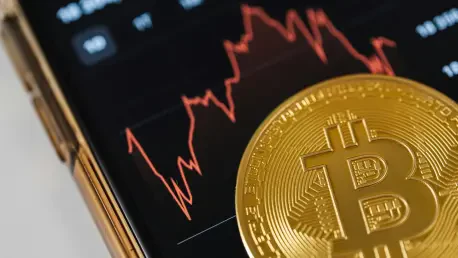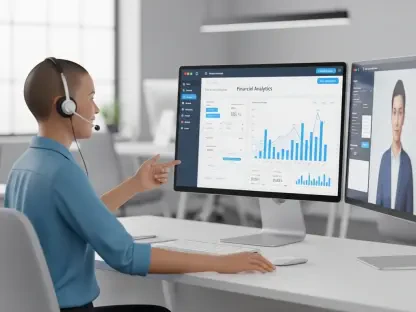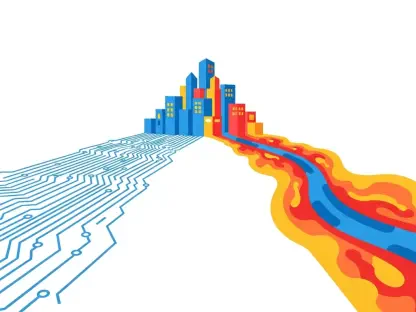I’m thrilled to sit down with Kofi Ndaikate, a renowned expert in the fast-evolving world of Fintech, with deep knowledge in blockchain, cryptocurrency, and the regulatory landscape. Today, we’re diving into the cutting-edge topic of AI-driven predictive scheduling in crypto futures trading—a game-changer for traders navigating the relentless 24/7 market. Our conversation explores how AI is revolutionizing timing in trading, the impact of structured trading windows, the practical benefits for work-life balance, and why this technology might just be the future of disciplined trading.
How would you describe predictive scheduling in the context of crypto futures trading, and what sets it apart from traditional trading signals?
Predictive scheduling is about anticipating the best times to trade, rather than just reacting to market movements or raw signals. In crypto futures, where the market never sleeps, it’s a method to forecast specific windows when conditions like liquidity and volatility align for high-probability trades. Unlike traditional signals that focus on what to buy or sell, predictive scheduling prioritizes when to act. It’s the difference between getting a tip on a stock and knowing the exact hour to execute the trade for maximum impact. Timing is everything in a market this volatile, and predictive scheduling uses data to give traders that edge.
What are some of the biggest challenges traders face with the constant availability of crypto markets, and how does this impact their well-being?
The always-on nature of crypto markets is a double-edged sword. It offers endless opportunities, but it also means traders feel pressured to monitor charts around the clock. This leads to exhaustion, poor decision-making, and even burnout. I’ve seen traders lose their edge because they’re mentally drained from staring at screens for 18 hours a day, trying not to miss a move. It’s not just about performance—constant availability can strain personal relationships and overall health. The lack of boundaries in a 24/7 market makes it hard to step away without feeling like you’re missing out, which is a real psychological burden.
Can you explain the concept of structured trading windows, like Green, Yellow, and Red Zones, and how they guide traders in their decisions?
Structured trading windows are a way to categorize market hours based on their suitability for trading. Green Zones are the sweet spots—times when liquidity, volatility, and market direction align for optimal trades. Yellow Zones signal caution, where conditions might be mixed or less predictable. Red Zones are essentially no-go periods, often marked by low volume or erratic price action. These zones help traders prioritize their focus, so they’re not wasting energy on low-probability setups. Instead of trading reactively, they can plan to act during Green Zones and preserve capital by avoiding Red Zones.
In what ways does AI enhance predictive scheduling beyond the basic framework of structured trading windows?
AI takes predictive scheduling to a whole new level by adding a layer of foresight. While structured windows classify historical or current conditions, AI analyzes vast datasets—think historical trades, live order flow, and market sentiment—to predict future high-probability windows. It’s not just about labeling past Green Zones; it’s about forecasting when the next one will likely occur. AI can process complex patterns, like how volatility shifts across time zones or reacts to news, in ways that manual analysis can’t. This predictive power means traders can prepare in advance, making their approach proactive rather than reactive.
How does planning trading sessions like appointments change the day-to-day experience of a crypto trader?
Treating trading sessions like appointments transforms the chaotic, always-on mindset into something structured and sustainable. When you know your high-probability windows ahead of time, you can schedule your day around them—log in for a focused hour or two, execute your trades, and then step away without guilt. It’s a huge shift from constantly checking charts. Traders tell me it reduces stress because they’re not tethered to their screens, and they can actually plan personal time. It makes trading feel more like a job with set hours rather than an endless grind, which is a game-changer for consistency and mental clarity.
Why do you believe AI is particularly well-suited to uncover timing patterns in crypto markets compared to traditional methods?
AI shines in handling the sheer complexity of crypto market dynamics. Traditional methods, like manual chart analysis or basic algorithms, struggle with the multi-layered factors at play—things like liquidity shifts, overlapping trading sessions across regions, or sudden volatility from news events. AI can process hundreds of variables at once, from technical indicators to real-time order book data, and detect subtle patterns humans might miss. It also adapts dynamically, updating predictions as new data comes in, which is critical in a market that changes by the minute. This ability to synthesize and adjust gives AI a clear edge over older, static approaches.
What are some of the tangible benefits predictive scheduling offers to individual traders in terms of efficiency and lifestyle?
For individual traders, predictive scheduling is a lifeline. It cuts down screen time dramatically because you’re only active during the most promising windows. Instead of sifting through endless signals, you might focus on just a handful of high-quality trades each day to hit your goals. This efficiency frees up hours for personal life, hobbies, or just rest, which is crucial for avoiding burnout. I’ve heard from traders who’ve gone from trading 12-hour days to just 2-3 focused hours, with better results. It’s about working smarter, not harder, and aligning trading with a healthier, more balanced lifestyle.
Looking ahead, what is your forecast for the role of predictive scheduling in the future of crypto trading?
I see predictive scheduling becoming a cornerstone of crypto trading as the industry matures. As markets get more competitive, timing will be just as critical as picking the right asset or direction. AI-driven scheduling will likely evolve to integrate even more data sources, like social media sentiment or macroeconomic trends, to refine predictions further. I expect leading platforms and providers to double down on this technology, making it a standard for serious traders. Ultimately, it’s not just about profit—it’s about sustainability. Predictive scheduling could redefine trading as a profession that prioritizes precision and balance, allowing traders to thrive without sacrificing their well-being.









